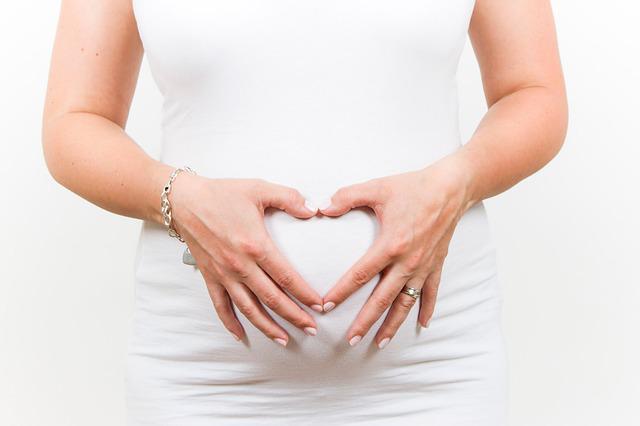Fibroids are benign tumors that grow inside or outside the uterus. This can affect fertility and the chances of getting pregnant.

Uterine fibroids are very common. About 20% to 80% of women develop such type of non-malignant growth by the age of 50. The 30% of women with the ages between 25 and 44 have symptoms of fibroids. This means that uterine fibroids are common during a woman's birth.
What are the symptoms of fibroids?
You may not have symptoms of fibroids. If there are any symptoms, the most common symptoms are:
- Heavy or painful menstruation
- Spotting (bleeding between periods)
- Anemic condition due to heavy or prolonged bleeding
- Long-term menstruation
- The feeling of over or low pressure in your lower abdomen
- Pain during intercourse
- Low back pain
- Constipation
- Reproductive problems, including infertility, miscarriage, and premature birth
- Frequent urination
- Difficulty emptying bladder
Myomas can be felt during a pelvic examination. Findings of abnormality in physical changes or suspected non-malignant growth need to examine through an imaging test like an ultrasound for confirming the growth is fibroid and not something.
Can fibroids reduce fertility?
Approximately 5% – 10% of infertile women have fibroids. Their size and location determine whether fibroids affect fertility. Examples include fibroids that are inside the uterine cavity (submucosal) or very large (greater than 6 cm in diameter) within the wall of the uterus (intramural).
Most women with fibroids will not be infertile. Women with fibroids and their partners should be thoroughly evaluated to find other problems with fertility before fibroids are treated.
A fertility specialist can help assess whether fibroids can interfere with pregnancy.
How do fibroids cause infertility?
There are several ways uterine fibroids can reduce fertility:
- Cervix shape alteration hampers the sperm entrance in the uterus
- Uterus shape alteration may interfere with the sperm motility or movement of embryos
- A uterine fibroid may block the fallopian tubes
- The size of the fibroid may affect the lining of the uterine cavity
- Blood circulation to the uterine cavity may be affected.
- A fibroid may reduce the embryo implantation to the uterine wall or impact the embryo development.
What are the effects of pregnancy on fibroids?
Most fibroids do not change during pregnancy, but some do. Evidence reported that one-third of uterine fibroids may grow in the first trimester.
Fibroid growth is likely to be affected by estrogen, and estrogen levels increase during pregnancy. This can lead to growth. However, in some women, fibroids may decrease during pregnancy.
Researchers found that 79% of the fibroids present before pregnancy had shrunk after birth.
How to treat fibroids in pregnancy?
During pregnancy, treatment of uterine fibroids is limited due to the risk to the fetus. Pregnant mothers may be prescribed bed rest, hydration, and mild pain medication to help manage the symptoms of fibroids.
In very rare cases, myomectomy can be performed in women in the second half of pregnancy. This procedure removes the fibroids from the outside of the uterus or from inside the uterine wall without affecting the uterus.
Fibroids that grow in the uterine cavity are usually left in place due to possible risks to the fetus.
How do treat fibroids before pregnancy to improve fertility?
Treatment of uterine fibroids before pregnancy may increase the risk of infertility.
The most common treatments for fibroids that maintain fertility include:
Myomectomy:
This surgery is used to remove fibroids. It may increase the need for cesarean delivery, and you’ll likely need to wait about three months following the procedure before attempting to conceive.
Hormonal birth control pills:
While you’re on the pill, you won’t be able to become pregnant. But this contraceptive can help ease symptoms of the condition, such as heavy bleeding and painful periods.
Intrauterine device (IUD):
Like the birth control pill, an IUD can prevent pregnancy if you use it. However, it can help eliminate some of the symptoms while maintaining fertility.
Gonadotropin-releasing hormone (Gn-RH) agonists:
This type of medicine inhibits the production of hormones that lead to ovulation and menstruation, so you cannot get pregnant while taking this medicine. This helps reduce fibroids.
Myolysis:
This procedure uses an electric current, laser, or radio-frequency energy beam to shrink the blood vessels that feed the fibroids.
Other treatments are available for women with fibroids who may want to have children in the future. Each treatment carries its own risk and complications, so talk with your doctor about your options.
References:
https://www.mayoclinic.org/fibroids-and-fertility/vid-20509513
https://www.healthline.com/health/womens-health/fibroids-pregnancy



